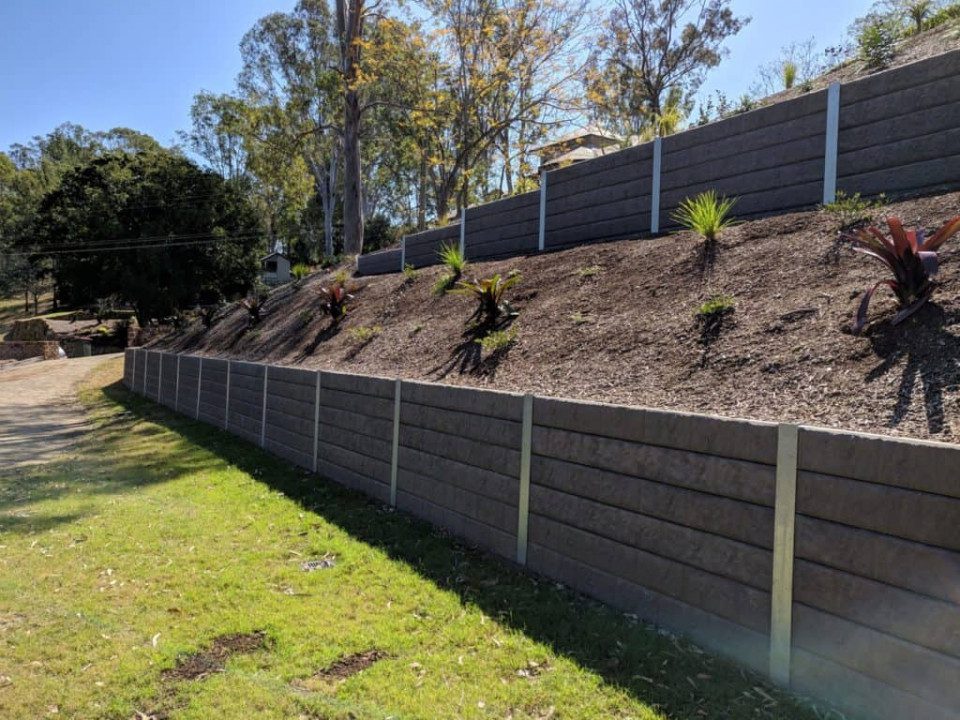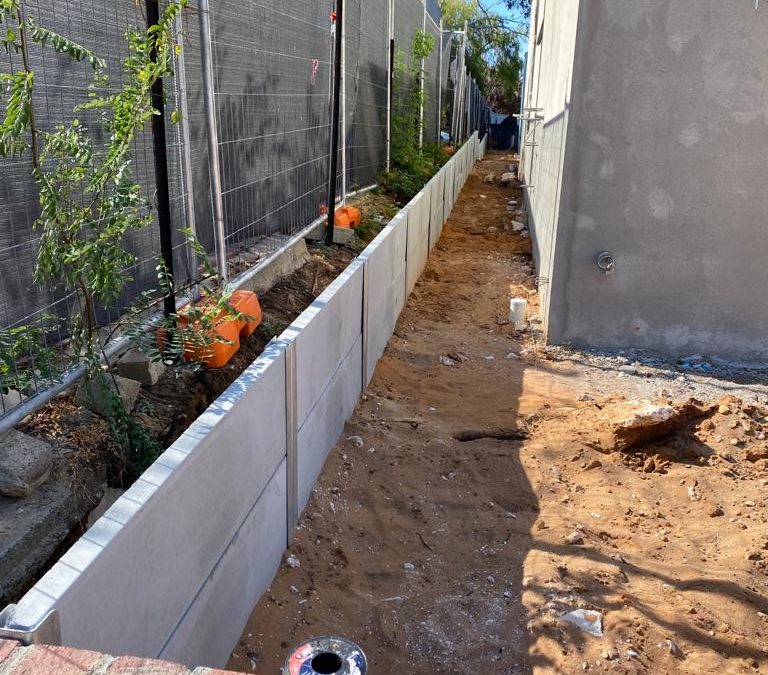Why You Need To Buy Durable Retaining Walls Sunshine Coast for Your Home
Guaranteeing Structural Stability: The Significance of Effectively Built Retaining Walls in Stopping Incline Failing
In the world of civil design and building, the importance of properly created keeping walls in preventing slope failing can not be downplayed. By discovering the complex interaction between these components, a deeper understanding of the essential role that preserving walls play in maintaining architectural integrity and protecting against slope failing emerges.
Duty of Retaining Walls in Stability
The necessity of retaining wall surfaces in guaranteeing incline stability is paramount in civil engineering techniques. Preserving wall surfaces serve a vital function in protecting against dirt erosion, taking care of water drainage, and keeping the architectural honesty of inclines. By supporting near-vertical or upright grade modifications, keeping wall surfaces aid to redistribute side pressure exerted by the soil, thus lowering the risk of slope failure.
One secret feature of retaining walls is to combat the pressure of gravity acting upon the dirt mass behind them. This is achieved through appropriate style and construction, which thinks about aspects such as dirt kind, wall surface elevation, drainage provisions, and prospective additional charge loads. By successfully retaining soil within specified boundaries, these structures aid to stabilize slopes and avoid landslides.
Moreover, preserving wall surfaces add to the aesthetic appeals of landscapes while supplying practical advantages. They can produce terraced levels for landscaping, support roadways or structures on hills, and boost the total functionality of sloped surface. In essence, keeping walls play an important role in maintaining incline stability and guaranteeing the security and longevity of civil engineering tasks.
Variables Affecting Wall Effectiveness
Aspects that affect the efficiency of maintaining walls include soil buildings, wall surface design, and outside loads. Appropriate wall surface style takes into consideration elements like wall elevation, wall surface type (e.g., gravity wall surfaces, cantilever walls), reinforcement products, water drainage systems, and building and construction strategies to ensure the wall can endure the lateral pressure applied by the retained dirt. By considering these elements comprehensively, engineers can construct retaining wall surfaces that properly protect against incline failing and make certain lasting architectural stability.
Style Factors To Consider for Retaining Walls
Integrating the important facets of dirt properties and outside loads into the architectural design process is essential for developing efficient retaining walls that ensure incline security. When making preserving walls, engineers must thoroughly assess the attributes of the surrounding soil, including its drainage, compaction, and kind residential or commercial properties. Comprehending these soil buildings is important for identifying the suitable wall support, thickness, and elevation required to hold up against the side stress put in by the dirt mass.
Moreover, outside tons such as surcharge lots from neighboring structures or web traffic, as well as seismic pressures, should be thought about throughout the design stage. These tons can significantly affect the stability and efficiency of a maintaining wall, requiring using proper style strategies and products to reduce prospective failing threats.
Additionally, the choice of appropriate products, such as concrete, rock, or timber, ought to line up with the site-specific conditions and aesthetic demands. Aspect of safety and security considerations, drain provisions, and construction techniques are likewise important elements that see post influence the total style and capability of preserving wall surfaces in stopping incline failure. By meticulously taking into consideration these design factors to consider, engineers can guarantee the structural integrity and long-term stability of preserving wall surfaces.

Building Best Practices for Toughness
When creating keeping walls for ideal sturdiness and durability, adherence to industry-standard techniques and meticulous attention to information are paramount. To make certain the longevity of a preserving wall surface, appropriate site preparation is crucial. This consists of appropriate compaction of the soil, proper water drainage systems, and ensuring the wall surface's structure is sound. Utilizing top quality materials, such as cinder blocks or all-natural stone, is crucial for the longevity of the framework. In addition, employing experienced experts with experience in constructing retaining walls can substantially influence the longevity of the last product.
Incorporating reinforcement methods, such as geogrids or steel bars, can enhance the architectural integrity of the retaining wall surface and protect against possible failures. By adhering to these building and construction best practices, retaining walls can endure the test of time and efficiently protect against incline failure.
Value of Proper Maintenance
Routine maintenance is important for protecting the structural honesty and performance of maintaining walls in time. Disregarding upkeep can lead to problems such as disintegration, fractures, or also complete failure of the wall surface, threatening the security of the slope it supports. To make certain that preserving wall surfaces continue link to execute their desired function efficiently, regular inspections must be carried out to identify any kind of signs of wear and tear. These assessments can assist in discovering early indication of possible issues, permitting prompt repair work to be performed before the issues rise (Retaining Walls Sunshine Coast).

Final Thought
To conclude, preserving wall surfaces play an important function in making sure architectural honesty and protecting against incline failing. By taking into consideration factors influencing wall effectiveness, adhering to develop considerations, complying with building and construction ideal techniques, and applying correct maintenance, the longevity of keeping wall surfaces can be made best use of. Retaining Walls Sunshine Coast. It is important to acknowledge the relevance of correctly built preserving walls in maintaining security and avoiding possible hazards related to incline failing
Variables that influence the performance of maintaining wall surfaces consist of soil residential or commercial properties, wall design, and outside tons. Appropriate wall layout considers elements like wall height, wall type (e.g., gravity walls, cantilever walls), reinforcement materials, drain systems, and construction techniques to ensure the wall can endure the lateral stress applied by the preserved dirt. By thinking about these variables thoroughly, engineers can construct maintaining wall surfaces that properly prevent incline failure and ensure long-term architectural stability.
Maintenance tasks may include getting rid of drain systems to prevent water buildup behind the wall, fixing any noticeable cracks or damages, and ensuring that the wall surface is cost-free from greenery that can put in pressure on the framework. By taking into consideration factors influencing wall surface effectiveness, adhering to check my site create factors to consider, following building ideal practices, and carrying out correct maintenance, the toughness of retaining walls can be made the most of.